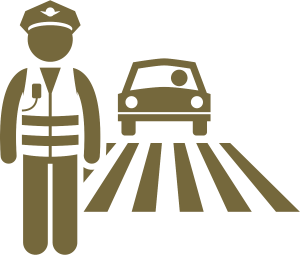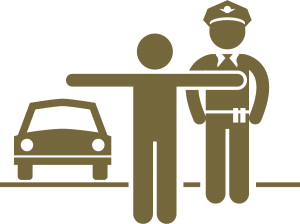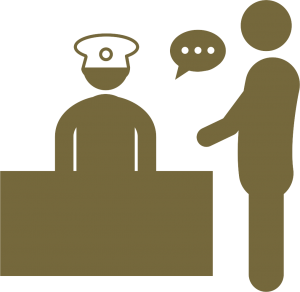How can a defence lawyer prove that racial profiling occurred during a traffic stop?
It’s very difficult to do, and is almost always proven through circumstantial evidence, as opposed to direct evidence.
Direct evidence is evidence which, if believed, proves the fact in question 100%. For example, if the officer says “Yes, I racially profiled the guy,” as long as that evidence is accepted as true, it proves racial profiling.
Another form of direct evidence is an eye witness account. In many cases, if a witness is credible and reliable, their testimony can be taken as proof. But you can’t directly observe racial profiling, so any direct evidence in a profiling case would have to come from what the officer says, because you can’t see into the mind of the officer.
Circumstantial evidence is evidence which could be interpreted different ways, but often suggests one scenario more strongly than others. On its own it doesn’t prove much because, as mentioned, it’s capable of many meanings. But if you add pieces of circumstantial evidence together the judge can arrive at a conclusion that it probably proves racial profiling (balance of probabilities). Circumstantial evidence can even be used to prove someone guilty of a crime, but it needs to have a higher level of certainty.
In the case of racial profiling, examples of circumstantial evidence could include:
- An opportunity to observe that the person was of a racial minority. A black man driving slowly past an officer in an expensive car or in a white neighbourhood and being stopped for no good reason could be an example of racial profiling. If an officer was following a car for a while and had time to run the plates and get a foreign or racialized name before pulling a driver over, this could be racial profiling. This on its own does not prove that a police officer is acting on racial bias, but it is a piece of evidence which could mean that. On the other hand, when someone is stopped for speeding on the highway, the officer has lasered the vehicle from 300 meters away and has no idea what you look like when he walks onto the highway to signal for you to pull over.
- A circumstance in which an officer lied about the real reason for the traffic stop. If you can prove that the officer lied about why he pulled the vehicle over, then that is a circumstantial piece of evidence that the officer is concealing the true reason for the stop. Obviously, proving that the officer is lying about this is not easy to do, but it can be easier than getting him to admit that he racially profiled someone. For example, an eye witness (even another officer) may testify that the accused did not engage in the behaviour said to have occurred, or radio transmissions might be inconsistent with what the officer says. The officer might testify that he thought a car was stolen because it looked like a recently reported stolen car, but if you can show that he said to his dispatcher that you failed to signal, then you have evidence.
- Examples of the officer possessing stereotypical beliefs. The officer may say something at the time (heard by other witnesses) or while testifying which suggests that he has racially stereotypical views. People often make comments that can be taken to be racist. These comments can have multiple meanings but if you add an ambiguous comment (or comments) along with other pieces of circumstantial evidence, it might help to support your case.
These are just three examples of the kinds of circumstantial evidence which might help. It is not a closed list. If you think you have a case for racial profiling, contact David Anber’s office today to talk about it.
David Anber
David Anber has been a trailblazing legal practitioner since 2006. His early entry into law practice during his studies marked the beginning of a distinguished career. As a member of both Ontario and Quebec’s bar associations, David excels in defending traffic and criminal cases across both provinces. David contributes to legal discourse through articles for the Defence Counsel Association of Ottawa and the Criminal Lawyer’s Association of Ontario.



